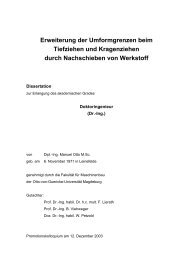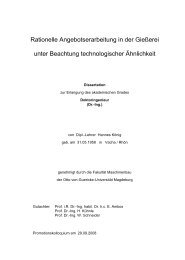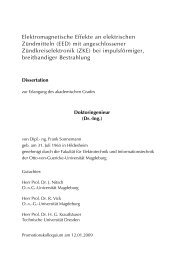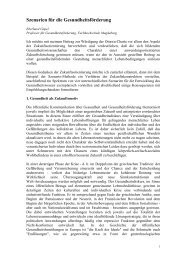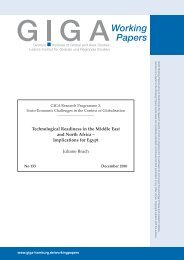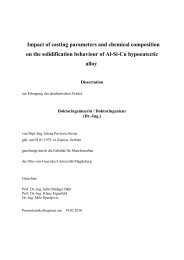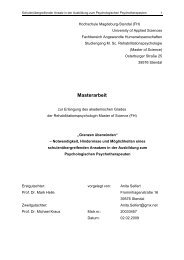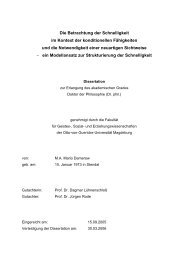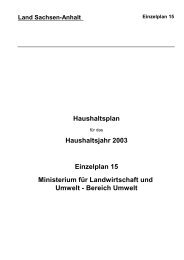Chapter 1
Chapter 1
Chapter 1
You also want an ePaper? Increase the reach of your titles
YUMPU automatically turns print PDFs into web optimized ePapers that Google loves.
encouraging results and provides useful lessons and recom- The Government has been undertaking reforms in the<br />
mendations (see World Bank Discussion paper 271, "Small agriculture sector since 1989, supported by two Bank<br />
Enterprises Adjusting to Liberalization in Five African adjustment operations. Progress has been substantial on the<br />
Countries"). reduction of input subsidies, while efforts have been more<br />
* Unlike many large enterprises, which generally suffer from modest on the reduction of price supports and the deregutrade<br />
liberalization and other measures to enhance market- lation of state-run marketing monopolies and farm extenbased<br />
competition, small enterprises tend to thrive under<br />
increased openness because they rely more on local resources<br />
sion services.<br />
and inputs, and the dynamic, better-educated, profit-moti- Increasing the role of market forces and<br />
vated entrepreneurs adapt well to changing incentives and<br />
economic conditions and can grow in market niches.<br />
strengthening private initiatives<br />
* Self-help groups, cooperatives, local nongovernmental On the input side, since 1989 subsidies have been substanorganizations,<br />
and manufacturers' associations are poten- tially reduced for ferdlizers, animal feed, pesticides and hertially<br />
the most effective intermediaries to raise the proba- bicides, seed, irrigation, and mechanized services (Mink<br />
bility of survival and expansion among small enterprises by 1994). In addition to the remaining input subsidies, the<br />
providing a support network (with dear cost-effectiveness Government makes direct grants available to private<br />
criteria) to help deal with individual problems and commu- investments in agriculture, and lending interest rates in 'prinicate<br />
with policymakers to address systemic problems. ority" activities like agriculture are fixed at 10-11 percent,<br />
Levy and others (1994) also investigate these issues, or about 2 to 3 percentage points below market rates for<br />
showing similar conclusions for four very different coun- commercial activities. Although these fixed, preferential<br />
tries (Colombia, Indonesia, Japan, and the Republic of rates have increased considerably since 1986, the costs and<br />
Korea). This report emphasizes that the best means for risks associated with lending to small and medium-size<br />
SMEs to improve their quality and efficiency are through farmers are quite high, and this interest rate policy still protransactions<br />
with buyers and suppliers, by having access to vides a significant element of subsidy. The total value of the<br />
a network of specialized consultants, and through formal credit and investment subsidies (and price supports) as a<br />
technology transfer agreements. The most successful meth- share of budgetary expenditures could not be estimated for<br />
ods to help companies include: (1) decentralized technical this report but should be assessed to determine their full<br />
and export marketing support that can respond to the diver- extent.<br />
sity of enterprises across subsectors, (2) private industry The Government is increasingly opening up the proviassociations<br />
that develop and diffuse sector-specific knowl- sion of agricultural support services to the private sector.<br />
edge and skills that cannot be obtained by individual small The supply of farm inputs, collection of produce, provision<br />
enterprises, and (3) joint efforts between industry associa- of mechanized plowing and harvesting, and fishery port sertions<br />
and government. vices have all been privatized. Extension, veterinary, and<br />
laboratory services are still essentially provided by the state,<br />
Reforming agriculture but there is a growing recognition that the private sector<br />
should be permitted to play a much stronger role in these<br />
The agricultural sector employs roughly one-third of the activities. The few private extension agents and veterinarilabor<br />
force and accounted for 16 percent of GDP and 11 ans who have recently begun providing services have been<br />
percent of export earnings in 1993/94. The sector is highly extremely successful. The Government can play an instruvulnerable<br />
to drought. For example, average growth for mental role in promoting further private sector expansion<br />
the 1990-94 period was 8 percent a year, but fluctuated of these services through accreditation policies and by<br />
from an increase of about 30 percent in 1990 to drought- removing subsidies on its own delivery of these services.<br />
induced declines of -5.3 percent and -9.9 percent per year Progress towards reducing the state's dominance in food<br />
in 1993 and 1994. Irrigated agriculture covers 6 percent of marketing has been slower. In cereals marketing, the<br />
arable land, but accounts for 30 percent of agricultural National Agency for Cereal Marketing (OC) import<br />
output. monopoly is being relaxed. The size of its operations, how-<br />
38 TuNIsiA's GLOBAL INTEGRAnON AND SuSTAiNBLE DEVELOPMENr STRATEGIC CHOICES FOR THE 2 1ST CENTURY



